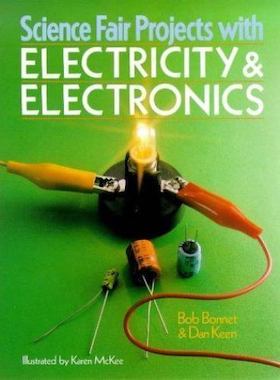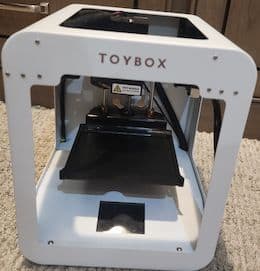
-----
Electroplating problems with my science fair project
Q. Hi! I am doing a project about electroplating for a science project and as currently there is a pandemic, I won't need to display it in school. I tried electroplating a stainless steel spoon with nickel and the spoon turned black. The liquid I used is nickel sulphate. I created it with nickel, vinegar ⇦in bulk on eBay or Amazon [affil link] , and salt. For some reason when I made that the cathode had tons of black bits on it while the anode had changed a lot (I don't know how to explain), and when I electroplate both the spoon and anode didn't touch each other and the voltage is approximately 3 A. If someone reads this please reply as my results hand in is a week later. Sorry if I am mean and Thanks!
Moses Wong- Hong Kong
January 15, 2022
A. Hi Moses. It's probably more important to your grades and to your education that you use the right words in describing your experiment than that you achieve success in electroplating :-)
So let me start with that. The voltage is approximately "3 V", not "3 A". "A" is an abbreviation for Amperes of current, whereas you are plating at 3 Volts of electromotive force. And you cannot create nickel sulphate with nickel, vinegar, and salt, but you can probably obtain a mix of nickel acetate and nickel chloride because vinegar is acetic acid and salt is sodium chloride. But where did you get the nickel and in what form?
Now, as for the spoon turning black...
Is your solution at least slightly emerald green? If it's not even faintly emerald green there is no nickel in it so you can't do nickel plating with it. If it is green, firstly I'd reduce the voltage to 1-1/2 V (one battery instead of two). A stainless steel spoon is not a great cathode for your experiment for a number of technical reasons, but also because the color contrast between stainless steel and nickel plating is very slight. Can you do plating onto copper instead, like a piece of copper pipe, copper wire, or a copper coin?
Luck & Regards,

Ted Mooney, P.E. RET
Striving to live Aloha
finishing.com - Pine Beach, New Jersey
Ted is available for instant help
or longer-term assistance.
⇩ Related postings, oldest first ⇩
Q. I'm using electroplating for my science fair experiment. I was wondering if you can give me any information as to why my brass key turned black, when I thought it would be coated with copper. I hooked a strip of copper (with a hole to attach to to a wire) up to a battery, and ran a wire from the other end of the battery to a key. There was an immediate reaction, and after an hour, the key that was submerged in a vinegar/salt solution was covered with... something black, that could be scratched off with some effort. I'm in 10th grade, this is for my Chem class
John C [surname deleted for privacy by Editor]- Huntington Sta. New York
2002
A. Hi John. My first thought is that the 'immediate reaction' you saw was excessive gassing from a voltage that was much too high. Please use 1-1/2 volts. 6 or 12 volts would be much too high. The other problem is that you may have had the current reversed. The negative pole of the battery attaches to the piece you want to plate.
Please see our FAQ about How Plating Works for some additional details for the experiment. Good luck!

Ted Mooney, P.E.
Striving to live Aloha
finishing.com - Pine Beach, New Jersey
Ted is available for instant help
or longer-term assistance.
Q. No, it was a 1.5 volt, D-sized battery. And the key was attached to the negative end. I'm somewhat skeptical if the "copper banding" if indeed pure copper. Upon closer inspection, it was black (on the inside) where I had cut it. Do you think that the black substance inside the key was responsible, or is it possible that electroplating copper on brass makes it black in color?
John C [returning]- Huntington Sta, New York
2002
A. Copper plating on brass should be copper colored. If it's not, something is wrong. But it's not uncommon to use too high a voltage, or put the plated part and the anode too close together. This makes more current flow than the copper ions can carry, causing the generation of too much hydrogen from the water, or forcing the copper to deposit as tiny black specs instead of building a proper crystal structure. This black smut is called 'burning'.
You may be right that your anode is not copper. Although I don't think that's the cause of the black smut, just get some copper wire for use as an anode -- that's very pure copper.

Ted Mooney, P.E.
Striving to live Aloha
finishing.com - Pine Beach, New Jersey
Ted is available for instant help
or longer-term assistance.
A. Alas, ted, the answer resides in the counter ions he used for the bath. Salt and acetic acid make for an interesting mix that will certainly boost conductivity, but they hardly are acceptable anions for trying to plate copper from. His hydrogen overpotential at the cathode is so reduced by the presence of the acetic acid that it will burn at 0.125 VDC. The resultant hydrogen will then form hydrochloric acid and etch his surface further, pushing the overpotential further and further away. You're right he burned it, but it's the solution that is the problem!

Tom Baker
wastewater treatment specialist - Warminster, Pennsylvania
by Steve Spangler

on eBay or Amazon
or AbeBooks
(affil link)
![]() vinegar plus salt is certainly not a suitable industrial plating electrolyte, Tom, no argument about that. But this is for a school science fair where safety is paramount and you can get a thin but decent copper plate out of this solution for science fair purposes.
vinegar plus salt is certainly not a suitable industrial plating electrolyte, Tom, no argument about that. But this is for a school science fair where safety is paramount and you can get a thin but decent copper plate out of this solution for science fair purposes.
The acid is so weak that the amount of copper in solution is very limited (you'll barely see the blue tint), but I've plated things like quarters where even a very thin plating will show very quickly, and I plated a brass key that you can see in the FAQ; it held up to light wear for several months. I suggest that John plate a quarter first, and after he has that down, he can see what happens with his brass key.

Ted Mooney, P.E.
Striving to live Aloha
finishing.com - Pine Beach, New Jersey
Ted is available for instant help
or longer-term assistance.
2002
Q. I was able to obtain a pure copper strip from my science teacher. I got better results. While it was still largely black, it had a copper tint to it. I also tried this experiment with a chrome-plated brass key. The key went from a shiny silver color to a total black (but it was a covering) , AND the copper strip had a coating of chrome on it. I'm VERY sure that I had the key hooked up to the negative side of the battery. Thank you very much for you help. Do you mind if I quote you in my report that goes along with my science fair display?
John C [returning]- Huntington Sta. New York
A. John, it will only cost you a quarter to try what I suggested :-)
The first step in building onto a successful experiment is to repeat what we know worked so that we know the solution and anode and polarity are okay. Instead, you've introduced yet another variable (the chrome plated key). To be trying step 2, plating a brass key; and step 3, plating a chrome plated key before you've tried the quarter may be wasting time.
What you are seeing on the copper strip is absolutely not chrome because it is impossible to plate chrome under these conditions--but, see, we are totally off on another tangent already! The negative side of a 1-1/2 volt battery is the bottom; the positive side is the raised pimple on the top. Are you sure the anode and cathode are not touching?
Sure you can quote me; I got B's and C's in high school -- it would be nice to have my name associated with an A :-)

Ted Mooney, P.E.
Striving to live Aloha
finishing.com - Pine Beach, New Jersey
Ted is available for instant help
or longer-term assistance.
A. I've not tried it, but the obvious choice for a sol'n to try would be a copper sulphate
⇦ on
eBay or
Amazon [affil link] sol'n with a little battery acid
⇦ on
eBay
or
Amazon [affil link]
added. Look at this reference, it may give you some ideas www.courseworkbank.co.uk/GCSE/Chemistry_Coursework/Electrolysis/
As with all plating the work must be CLEAN to have any chance of success, scrub it with a say a bath or sink cleaner, well rinse, without touching too much of the surface.
Best of luck,
- Edinburgh, Scotland
2003
![]() No question that copper sulphate plus sulfuric acid is a better plating solution, David :-)
No question that copper sulphate plus sulfuric acid is a better plating solution, David :-)
An issue, though, is what is safe to display at the science fair. Your students may be more mature, but some of students in my kid's class apparently ran around when the teachers had their backs turned and dumped all the liquids on the floor :-)

Ted Mooney, P.E.
Striving to live Aloha
finishing.com - Pine Beach, New Jersey
Ted is available for instant help
or longer-term assistance.
Q. My son wants to do an electrolysis science project; he wants to clean pennies using electrolysis or reverse electrolysis. We have read of dangers of toxic gases being released and/or dangerous metal compounds ending up in the electrolyte depending on what is being used. He was going to use a solution of water and Arm and Hammer washing soda ⇦ on eBay or Amazon [affil link] , and a steel nail on the positive. Can you tell me what gas is being released and if it is safe? Would you recommend this solution and cathode (not sure I got that right) or another?
Joe Mulvey- Marlboro, Massachusetts USA
March 1, 2008
A. Hi Joe. No poisons :-)
The only gasses evolved from your son's experiment will be hydrogen at the cathode (the positive pole) and oxygen at the anode (the negative pole), both of which are non-toxic; but there is just no saying "impossible" -- we can all be run over by the proverbial truck at any time, even sitting at the kitchen table :-)
But I'd be more concerned about the electricity: certainly not more than a 6 volt battery. 3 volts is probably enough :-)

Ted Mooney, P.E.
Striving to live Aloha
finishing.com - Pine Beach, New Jersey
Ted is available for instant help
or longer-term assistance.
![]() Hi. I just read your conversation and it helped me a lot at understanding copper plating. I was actually copper plating some 3d printed parts so yeah. And I have a youtube channel -- can I tell your name that you helped me with this step of my project.
Hi. I just read your conversation and it helped me a lot at understanding copper plating. I was actually copper plating some 3d printed parts so yeah. And I have a youtube channel -- can I tell your name that you helped me with this step of my project.
Student - Bangalore, India
January 5, 2022
A. Thanks Suhan. Sure, no problem.
Luck & Regards,

Ted Mooney, P.E. RET
Striving to live Aloha
finishing.com - Pine Beach, New Jersey
Ted is available for instant help
or longer-term assistance.
January 2022
Q, A, or Comment on THIS thread -or- Start a NEW Thread


